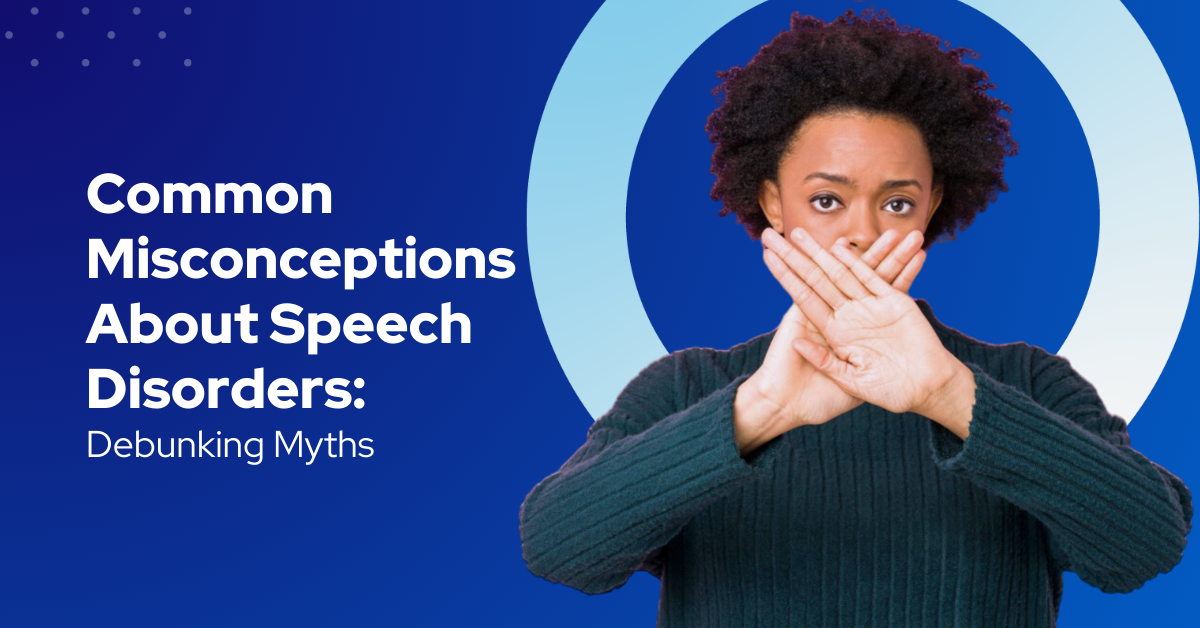Speech disorders affect millions of people, yet misconceptions about them persist. These myths can lead to stigma, delays in seeking treatment, or confusion about the best approaches to care. In this blog, we’ll debunk common myths about speech disorders and share the facts to help you better understand this important topic.
What Are Speech Disorders?
Speech disorders involve difficulties with articulation, fluency, voice, or resonance that impact communication. They can affect people of all ages and range from mild to severe.
Common Types of Speech Disorders:
-
Articulation disorders: Problems with sound production.
-
Fluency disorders: Issues like stuttering.
-
Resonance disorders: Difficulty with voice quality, pitch, or volume.
-
Apraxia: Difficulty planning and coordinating speech movements.
Debunking Myths About Speech Disorders
Myth 1: Speech Disorders Are Rare
Fact: Speech disorders are more common than many realize.
-
About 8-9% of children have a speech or language disorder【1】.
-
In adults, conditions like aphasia impact approximately 1 in 250 people【2】.

Myth 2: Children Will Grow Out of Speech Problems
Fact: While some children may naturally improve, many require intervention.
-
70-80% of preschoolers who stutter may recover, but the rest need support【3】.
-
Early intervention significantly improves outcomes for children with persistent speech delays.

Myth 3: Speech Disorders Only Affect Speech
Fact: Speech disorders can impact:
-
Self-esteem and confidence: Communication struggles can lead to frustration and social withdrawal.
-
Academic performance: Children with untreated speech disorders may struggle with reading and writing.
-
Career opportunities: Adults may face barriers in interviews or workplace interactions.

Myth 4: Speech Therapy Is Only for Kids
Fact: Adults also benefit from speech therapy.
-
Stroke survivors, individuals with neurological conditions, and even professionals working on public speaking seek therapy to improve communication.
Example: A 45-year-old recovering from a stroke may need therapy to regain clarity in speech.
Myth 5: Speech Disorders Indicate Low Intelligence
Fact: Intelligence and speech disorders are unrelated.
-
Albert Einstein, one of the greatest minds in history, reportedly had a speech delay as a child.
-
People with speech disorders often excel academically and professionally when given the right support.
Statistic: Studies show that children with speech disorders score within normal ranges on intelligence tests【5】.
Understanding the Facts: Why It Matters
Debunking these myths is crucial for fostering a more supportive and informed approach to speech disorders. By addressing misconceptions, we can:
-
Encourage early diagnosis and intervention.
-
Reduce stigma and build empathy.
-
Empower individuals with speech disorders to seek help.
Spot Pal’s Role in Supporting Speech Development
Spot Pal is designed to complement therapy for speech and oral health challenges. By improving tongue posture and breathing, Spot Pal can:
-
Enhance articulation and clarity in speech.
-
Reduce health issues linked to improper tongue placement, such as snoring or sleep apnea.
-
Promote confidence in communication.
Speech disorders are often misunderstood, but with the right knowledge and tools, they are manageable. By debunking these myths, we hope to inspire greater awareness and encourage early intervention for children and adults alike.
Learn more about how Spot Pal can support speech development here.
Sources:
-
National Institute on Deafness and Other Communication Disorders (NIDCD)
-
National Aphasia Association
-
American Speech-Language-Hearing Association (ASHA)
-
International Journal of Speech-Language Pathology
-
Child Development Research Journal

Share:
Finding the Right Speech Therapist: What to Look For
Daily Habits That Can Worsen TMJ Pain